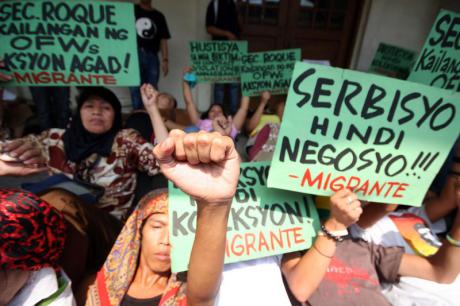
18 February 2015, Open Democracy
There has been lots of talk about multinational corporations’ responsibility for fuelling forced labour. But what about the labour market intermediaries who recruit and supply vulnerable workers to these firms?
In many people’s minds, words like trafficking and modern slavery are associated with sexual exploitation, especially of women and children. As theInternational Labour Organisation has highlighted, however, the majority of the estimated 21 million victims of ‘modern slavery’ worldwide are exploited for their labour. In diverse sectors including agriculture and food processing, manufacturing, construction and domestic work, vulnerable workers are subject to coercion that is often exacerbated by the lack of a direct employment relation. In other words, from agricultural labour gangs to subcontracted workers in factories, labour intermediaries play a role in creating a hyper-flexible workforce. In the broadest sense, and in human relations theory, labour intermediaries are any individuals or organizations that stand between a worker and the firm or entity that requires labour. They act as brokers to fill jobs and they ‘lease’ labour (in the case of temporary workers) to companies seeking flexibility. However, as research in sectors like horticulture has shown, labour intermediaries or contractors are key players in forced labour situations
[….]
These issues have generated some recent debate in Canada, including among activists, advocates and politicians seeking progressive reforms to these programs. Such debate often centres on competing regimes of regulation for intermediaries of various kinds, including the much-lauded Manitoba model that Judy and her co-author Daniel Parrot write about in the book. The Manitoba model addresses the exorbitant—and illegal—placement fees charged to temporary foreign workers, who were increasingly recognized as important to the province’s economy, by holding employers legally responsible for their reimbursement. This has led to a rise in direct recruitment. The system also encompasses a licensing mechanism for foreign recruiters. The Manitoba model is now being promoted in British Colombia, the province contrasted (unfavourably) with Manitoba in the book, as a solution to recurrent problems of exploitation by recruiters and immigration consultants.